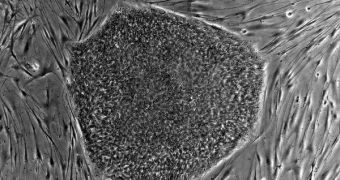Scientists in the United States have recently revealed in a new study that, when given the proper conditions, all types of adult cells in the body can revert back to a stem cell-like appearance and function. The find is extremely important when considering the fact that these cells represent the future of medicine. In the near future, they will be used to create artificial organs inside bioreactors that will allow doctors to implant patients with lungs, hearts and livers made of their own cells. The risk of rejection will be almost zero, and thousands of lives may be spared, Nature News reports.
The investigation team has also managed to reduce the production process to about half of its former length, which means that stem cells can now be obtained a lot faster in case of emergency. The scientists are based at the Whitehead Institute for Biomedical Research, in Cambridge, Massachusetts, and have been led in the research by expert Rudolf Jaenisch. The cells that are obtained from reverse-engineering adult cells are called induced pluripotent stem cells (iPS).
Until now, the iPS production process was highly complex and lengthy, and some researchers in the field even began to wonder if all adult cells could be turned into stem cells. A number of them even hypothesized that only specific subsets of cells could be turned into iPS, but the new research demonstrates that this is not true. The fact that the WIBR team discovered the new production process also bears considerable implications for medical research for another reason, other than the possible advancements. Scientists want to use iPS to replace human embryonic stem cells (hESC), which are ethically controversial.
The experts report that they managed to grow individual immune-system cells and make them revert back to their stem cell-like “settings.” In their investigation, some of the cells began to send out iPS signals just two weeks after the study started, while others took up to 18 weeks to do so. Experts are still unsure as to why this difference exists. “Essentially, all cells have the potential to become pluripotent. It is something that seems to happen to the cells under these conditions stochastically — that is, in a continuous, but probabilistic fashion,” Jaenisch explains.

 14 DAY TRIAL //
14 DAY TRIAL //